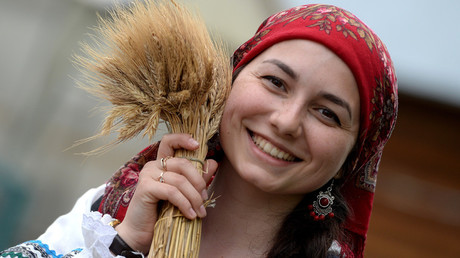Russian economy under Putin: Quality of life tripled, foreign debt fell 75%
Vladimir Putin was first elected as Russian President in 2000. Here’s how the Russian economy has transformed in the intervening years by numbers.
Quality of life
Before Putin’s election, Russia had a $9,889 GDP per capita by Purchasing Power Parity (PPP). The figure had almost tripled by 2017, and has now reached $27,900. Russia has the highest GDP per capita among its fellow BRICS countries, with the next-highest, China, having just $16,624. The PPP takes into account the relative cost of living and the inflation rates of countries in order to compare living standards in different nations.
The average nominal monthly wage has grown almost 11-fold from $61 to $652. Unemployment has contracted from 13 percent to 5.2 percent. Pensions have grown over 1,000 percent in the same period from $20 to $221.
Economy performance
Russia is the sixth-largest economy in the world by PPP, with a $4-trillion GDP. PwC has predicted that, by 2050, the country will become the largest economy in Europe by this measure, leaving behind Germany and the United Kingdom.
Back in 1999, the Russian economy by PPP was worth only $620 billion. So, in the last 18 years, Russian economic output in these terms has increased by 600 percent.
Inflation rates have decreased from 36.5 percent to 2.5 percent by the end of 2017. The total value of assets of the Russian banking system has risen 24-fold to $1.43 trillion. Capitalization of the Russian Stock Market has grown more than 15-fold to $621 billion.
Public debt & foreign reserves
When Putin was elected in 2000, Russia had just $12 billion in reserves, accompanied by a public debt, which was almost equal to the country’s economic output at 92.1 percent.
 Things have changed markedly in 18 years, as Russia’s public debt has now shrunk to 17.4 percent of GDP and reserves have increased to $356 billion. Low debt and growing reserves helped the country to live through the economic crisis of 2008 and the recession of 2014-2016, caused by a fall in oil prices and Western sanctions.
Things have changed markedly in 18 years, as Russia’s public debt has now shrunk to 17.4 percent of GDP and reserves have increased to $356 billion. Low debt and growing reserves helped the country to live through the economic crisis of 2008 and the recession of 2014-2016, caused by a fall in oil prices and Western sanctions.
Russian gold reserves have increased by more than 500 percent since 2000. The Central Bank of Russia (CBR) added 9.3 tons of gold to its reserves in December, bringing the total yearly holdings to a record 1,838.211 tons – worth over $76 billion in monetary terms.
The World Gold Council shows that Russia is the largest buyer of gold and is the world's third-biggest producer, with the Central Bank purchasing from domestic miners through commercial banks.
Agriculture
While the Russian economy remains dominated by oil and gas revenues, its agriculture sector has boomed in recent years. Russian farmers produced their largest ever crop in the 2017 agricultural year, breaking the 40-year-old Soviet record, and harvesting more than 130 million tons.
In 2016, Russia became the world’s leader in wheat exports. Since the early 2000s, the Russian share of the world wheat market has quadrupled, from four to 16 percent.
Although agriculture still remains far behind the energy sector, it surpassed arms sales and became the country's second-largest export.
Russia started exporting grain in 2002, selling a little over seven million tons. In 2017, Russia wanted to sell 45 million tons – an increase of more than 600 percent.


0 Comments:
Post a Comment
Subscribe to Post Comments [Atom]
<< Home